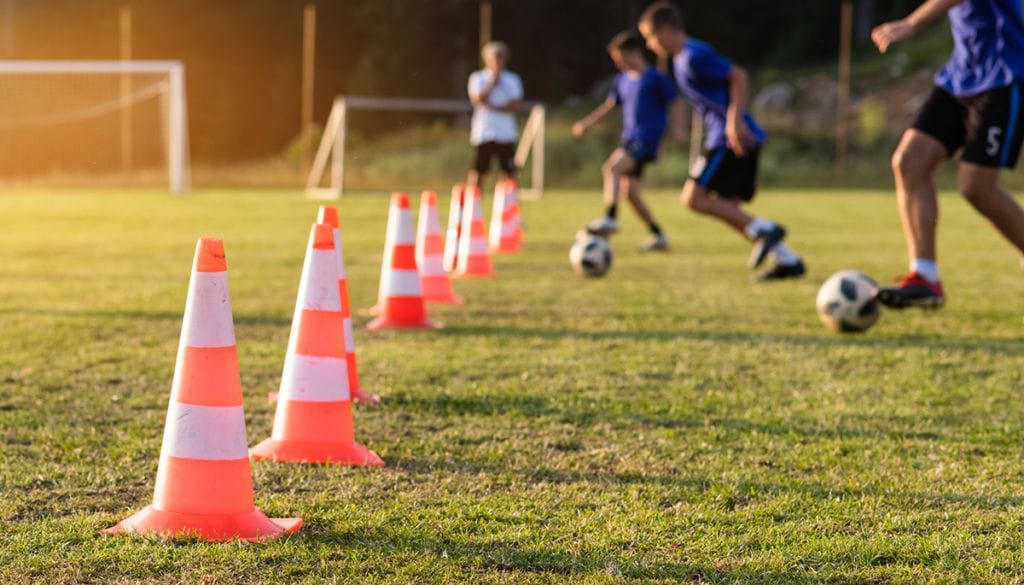Long-term athlete development is a concept that encourages young athletes to navigate their way through multiple sports initially, ultimately specializing in a single sport. Young athletes will adjust their training and specialization during adolescence, tailoring their body type, training, and role to the demands of a specific sport.
The way an athlete learns from an early age is important! In the beginning, there is almost no structure, allowing a young athlete to enjoy the sport—or fall in love with it—based on their limited understanding of the sport. Instead, their enjoyment is driven by simple pleasures, showcased by their willingness to participate in even the most basic tasks involved in the sport.
For example, the most basic task in soccer is kicking the ball. Before the age of 6, teaching a structured drill of dribbling the ball vs having the child kick the ball might lead a young athlete down a short path to frustration and burnout.
Too much structure too soon will burn anybody out—especially a young child who’s just learning to love a sport. These guidelines are essential for a young athlete to grow.
From age 0 – 6, it’s all about exploring and introducing sports to illicit enjoyment. The number of hours immersed in sport doesn’t necessarily matter if the little ones enjoy doing it.
From there, learning the fundamentals of each sport is crucial for the athlete to move into the next stage of athlete development.
Around age 7 – 10, the athlete has been active for several years in their sport and is beginning to appreciate the process of learning how to become better. They are active in their sport but are still participating in other sports too, working to become a better overall athlete.
Specialization in a sport too early can and will cause burnout. Additionally, introducing purposeful breaks from sport – into an athlete’s approach – is vital to long-term athletic development. This approach encourages young athletes to remain active throughout the year by diminishing burnout and returning them to the sport they love – refreshed and revitalised.
However, if the sport begins to feel like work and becomes no longer fun, they may start to disengage from the sport.
Once an athlete has learned how to train, they will ‘train to train’. This simply means the athlete will spend a specific amount of hours, possibly outside of practice, honing in on sport-specific skills on his or her own time, because he or she enjoys the training process. This can occur during the early teen years.
By this point, you typically shouldn’t see a sport drop-off yet—meaning baseball, basketball, and football season still are afforded the necessary amount of time to be competitive in all three. This is an indicator that the young athlete is developing (or has already developed) a ‘train to train’ mentality.
The next stage is where athletes ‘train to compete’. This phase is where we see an athlete engage more in their sport, and show more understanding about what goes into becoming a great athlete. It’s not always about doing drills; it’s about learning to take those drills and exercises and apply them in action.
Training to compete can drive further specialization in a sport. This stage generally happens from Grade 12 through the College Years where the athlete has taken time to understand their limitations and puts focus on the areas that will give them necessary advantages over their competition.
The time they allot to this form of specialization will begin to take away from other sports, but at this point, the young athlete should be fully aware of this scenario, and organic tapering-off of other sports can be expected. They then begin to move to the final stage, and ‘train to win.’
At the training-to-win stage, the athlete is seasoned in their sport, and they dedicate their time preparing for competitive events—training to become a world-class athlete.
This long-term athlete development framework is a life-long strategy, culminating in the final stage which promotes athletes to stay active for life. A well-rounded athlete at this stage becomes a potential coach or mentor, helping new, young athletes as they begin their journey in athletic development and sports specialization.


